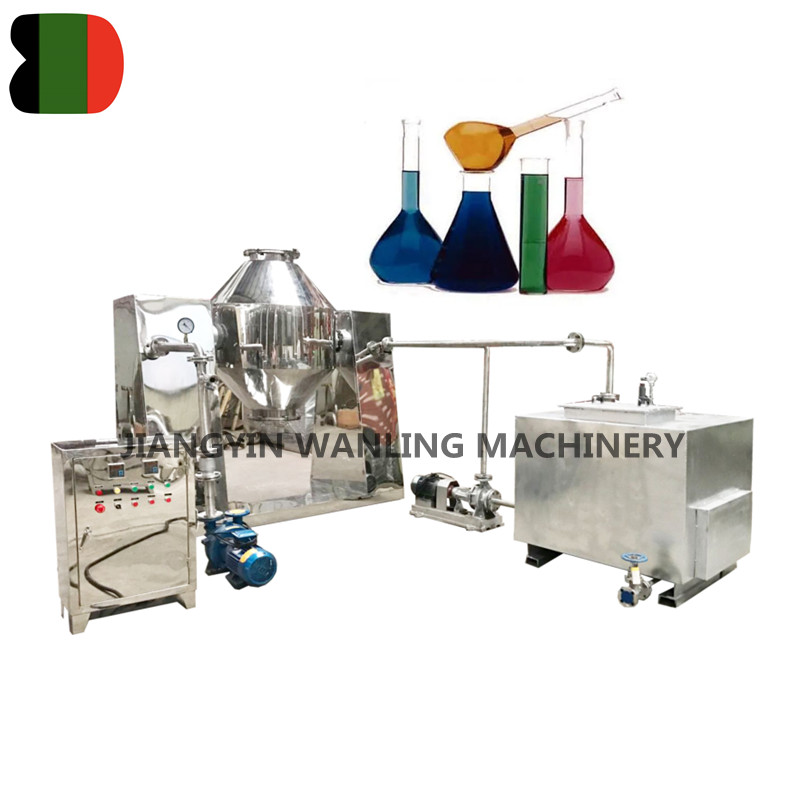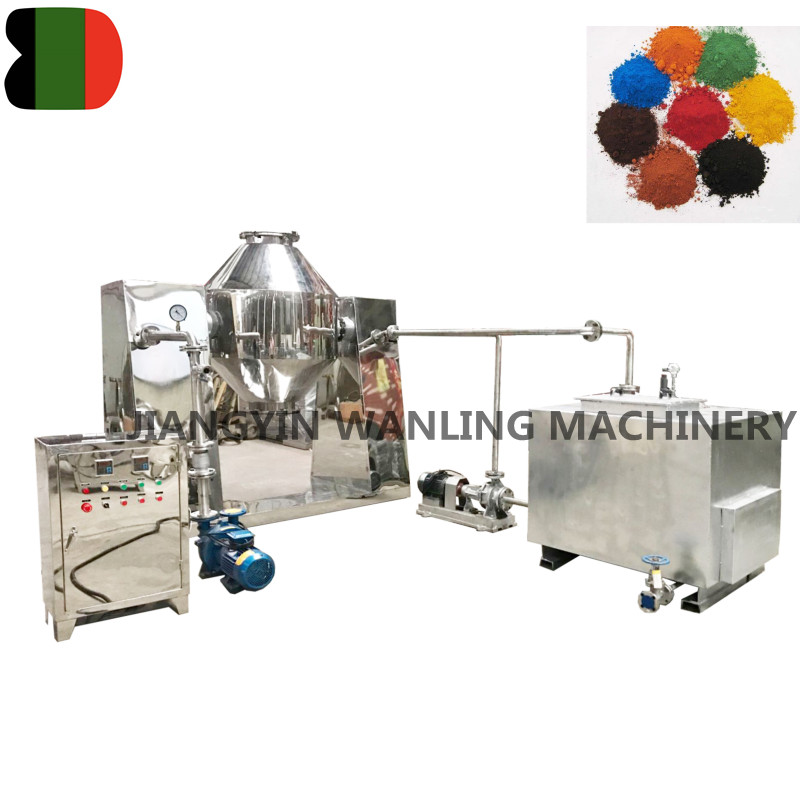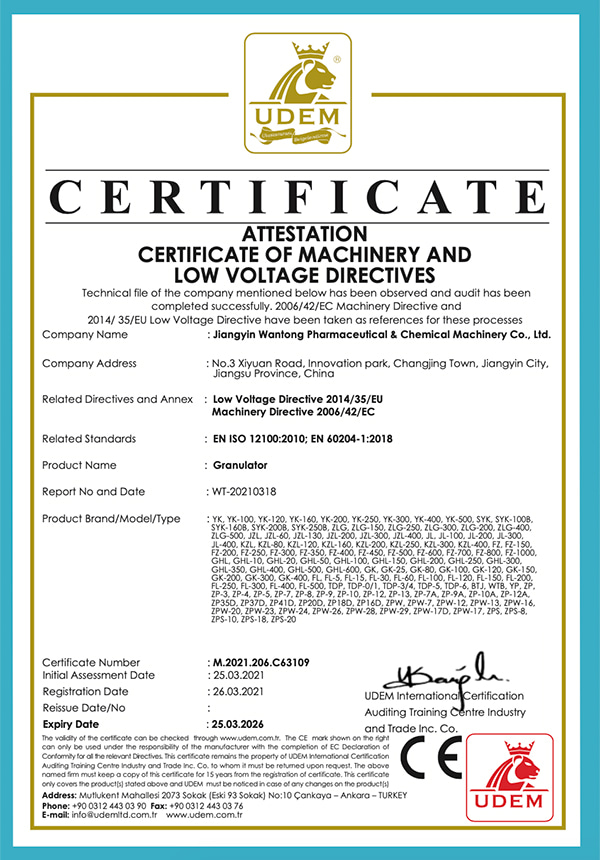Double Cone Vacuum Dryer Manufacturer
-

SZG Rotary Vacumm Double Cone Drying Machine
The Double Cone Vacuum Dryer Machine can mix and dry the powder, crystal material and granule material in chemical industry, pharmaceutical ... -

SZG Double Cone Vacuum Dryer Machine
Gentle Drying: Low-temperature operation due to vacuum minimizes degradation of heat-sensitive materials like pharmaceuticals and fine chemi... -

SZG double cone vacuum drying machine
The double cone vacuum drying machine can mix and dry powder,granules and liquid in chemical industry, pharmaceutical industry, foodstuff in...
Double cone vacuum dryer is a new type of dryer that integrates mixed drying. Combine the condenser, vacuum pump, and dryer to form a vacuum drying device. This machine has advanced design, simple internal structure, easy cleaning, and can discharge all materials, making it easy to operate.
Suitable for the concentration, mixing, drying, and low-temperature drying of powdered, granular, and fiber materials in industries such as chemical, pharmaceutical, and food.

About Us
Honor
-
 Honor
Honor -
 CE
CE
News
-
Industry News 2025-10-22
1. What a Horizontal Ribbon Mixer Is and Where It’s Used A horizontal ribbon mixer is an industrial ...
View More -
Industry News 2025-10-16
A tray dryer is a batch drying equipment widely used in the pharmaceutical, food, and chemical indus...
View More -
How does a double cone blender compare to ribbon blenders or V-blenders for industrial applications?Industry News 2025-10-09
A double cone blender has distinct advantages and limitations when compared to ribbon blenders and V...
View More -
Industry News 2025-10-01
Electric-Powered Tray Dryers Advantages: Precise and Stable Temperature ControlElectric-powered tr...
View More
Industry Knowledge Expansion
What are the key components of the double cone vacuum dryer, and how do they contribute to its operation?
Cone-shaped Vessel: The main body of the dryer where the material to be dried is placed. Its cone shape allows for efficient mixing and movement of the material during the drying process.
Agitator: This component facilitates mixing and movement of the material inside the vessel, ensuring uniform drying and preventing clumping or sticking.
Heating System: Usually in the form of an external jacket or coils within the vessel, the heating system provides the energy necessary for the drying process. It can be steam, hot water, or electrically heated.
Vacuum System: Consists of a vacuum pump and associated piping or channels. It creates a vacuum inside the vessel, lowering the pressure to enhance the drying process by reducing the boiling point of moisture in the material, thus speeding up evaporation.
Condenser: A crucial component that condenses the evaporated moisture from the material back into liquid form. This condensate is then collected and removed from the system, preventing it from re-entering the dried material.
Control System: Typically includes temperature controllers, pressure gauges, and other monitoring devices to regulate and maintain the drying parameters such as temperature, pressure, and vacuum level.
Discharge Valve: Allows for the removal of dried material from the vessel once the drying process is complete. It's usually positioned at the bottom of the cone-shaped vessel for easy access.
What energy sources can be used to power the double cone vacuum dryer, and are there any energy-saving features?
Steam: Steam is a widely used energy source for heating in industrial processes, including drying. Steam can be supplied directly to the jacket or coils within the dryer vessel to heat the material.
Hot Water: Similar to steam, hot water can also be used as a heating medium to transfer heat to the dryer vessel. It's often used in processes where steam is not available or practical.
Electricity: Electrically heated double cone vacuum dryers use electric heating elements to generate heat. This option is suitable for situations where steam or hot water is not readily available or when precise temperature control is required.
Thermal Oil: Some dryers utilize thermal oil as a heating medium. The oil is heated in an external heat exchanger and then circulated through the jacket or coils inside the dryer vessel to transfer heat to the material.
As for energy-saving features, modern double cone vacuum dryers often incorporate several design elements and operational strategies to improve energy efficiency:
Insulation: Effective insulation around the dryer vessel minimizes heat loss to the surroundings, reducing energy consumption during operation.
Variable Speed Drives: Agitator motors equipped with variable speed drives allow for precise control of mixing intensity, optimizing energy usage based on the requirements of the drying process.
Heat Recovery Systems: Heat exchangers can be installed to recover heat from the exhaust gases or condensate and use it to preheat incoming air or feed materials, reducing the overall energy demand.
Optimized Design: Efficient design features such as improved airflow patterns, heat distribution mechanisms, and optimized vessel geometry can enhance heat transfer efficiency and reduce energy losses.
Process Optimization: Implementing advanced control algorithms and process optimization techniques can help minimize energy consumption by adjusting operating parameters such as temperature, vacuum level, and agitation speed to achieve the desired drying results with minimal energy input.
By incorporating these energy-saving features and utilizing efficient energy sources, double cone vacuum dryers can help reduce operating costs and environmental impact while maintaining high performance and productivity in industrial drying applications.



 Español
Español
